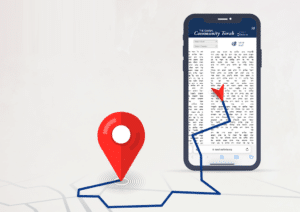Progressive web apps – everything you need to know
Among the web innovations that have gained popularity in the last couple of years are progressive web apps. The term progressive web apps was introduced by Google in 2015. As web technologies have gotten better over time, websites being built today no longer have static content as they used to 10 or 15 years ago. Today’s websites are more interactive just like web applications.
Now that websites are more like web apps, developers can easily turn these websites into progressive web apps that can run as native mobile apps on mobile devices. If you are interested in learning more about progressive web apps and their capabilities, this article is for you.
By the end of this article, you will have a clear idea of what progressive web apps are, their benefits, pros and cons, and more. Without wasting any more of your time, let’s jump right in!
What are progressive web apps?
Progress web apps (PWA) are mobile applications built using standard web technologies, including HTML, CSS, and JavaScript. These apps can be installed on the home screens of mobile devices and run just like native apps. That means they receive push notifications and can also perform certain functionalities while offline.
Unlike native mobile apps, PWAs aren’t deployed in the official App Stores for people to download and use. Instead, progressive web apps are installed through the browser when a user visits a given website. Once the progressive app is installed, its icon will appear on the home screen and the user can interact with the app just like they interact with native apps.
Progressive web apps integrate with APIs to further enhance their functionality and improve their reliability. Unlike native apps, progressive web apps are cross-platform, so they can be installed on any mobile device without having to make any changes to the code. Many developers have picked an interest in progressive web apps because they are easier and cheaper to develop and deploy when compared to native applications.
Some of the big brands that have the mobile version of their websites as progressive web apps include Twitter (Twitter Lite), Jumia, Tinder, Walmart, Pinterest, Alibaba, AliExpress and more. It should be noted that these platforms also have native app versions that you can download from the App Store and Google Play Store. The PWA versions are available as an option.
Features of a progressive web application
Cross-platform
Any progressive web app can be installed on any mobile platform without having to change its code. This alone eliminates the costs and the time that would have been spent coding different apps for different mobile platforms.
Installable
Progressive web apps should also be easily accessed and installed using any browser on a mobile device. Several studies have shown that users tend to engage more with apps installed on their devices as compared to visiting websites in a browser. So, convincing your target users to install your progressive web app could easily enhance your website’s growth.
Discoverability
Since progressive web apps are basically websites that have been converted into mobile apps, their content is indexed by search engines. This makes it possible for users to find your website/PWA when they search for anything related to the content in your PWA. On the other hand, content in native apps cannot be indexed. So, the only way people will get access to the content in a native app is by downloading it from an app store.
Offline access
Unlike websites, some of the features of PWA can be accessed offline. The user may not be able to download new content from the web, but they will have access to all content that was already loaded on the device before they went offline.
App responsiveness
Progressive web apps are also designed to automatically rearrange their content based on the size and aspect ratio of the screens on different devices. Responsiveness improves the user experience, leading to more user retention and ranking higher in search engine results pages.
Progressive web apps vs website
A progressive web app is different from a normal website in several ways. Below are some of the differences between progressive web apps and normal websites.
Responsive
When designing a progressive web application, developers need to put into consideration the different screen sizes and aspect ratios of the user’s devices. Unlike websites that are rendered within a browser, progressive web apps need to take advantage of the device’s full screen. So, the developer needs to create different versions to ensure all devices are catered for.
Ability to work offline
A progressive web app needs to integrate caching functionalities that allow the app to load more data (content) that the user can access even when they are offline. On the other hand, websites don’t require such functionalities since users need to be connected to the internet to access them.
Push notifications
Developers also have to integrate the push notification functionality into their PWA if they want to get more user interaction. The ability to send push notification to mobile users is one of the major advantages PWA have over websites.
Development and maintenance costs
Progressive web apps are more expensive to build and maintain when compared to a website. Having to create different versions of a website just to cater for different devices increases the costs of creating PWA. However, this is a cost that many businesses are willing to incur thanks to the many benefits progressive web apps have over normal websites. It should also be noted that progressive web apps are much cheaper to develop than native mobile apps.
Benefits of progressive web applications
More user interaction
Studies show that websites with progressive web apps have three times more user interaction than normal websites. The main reason behind this are push notifications that users receive in real-time alerting them about certain changes on the websites.
They work offline
Just like native mobile apps, PWA can be accessed and used offline as long the data (content) that the user wants to access was loaded when they were connected to the internet. Offline access is a step up as far as user experience is concerned.
Cheaper than native apps
Small businesses have been the major beneficiaries of progressive web apps because they don’t require the costs of development and deployment that are involved when creating mobile apps.
They are light and fast
Progressive web apps are almost as fast as native apps and way faster than normal websites. Remember, they are also lightweight which reduces the bandwidth and time a user needs to download and install the app.
Built with the common web technologies
If you know how to build websites, you can easily create progressive web apps because you won’t have to learn any new technologies, like React or Angular which are crucial when building native mobile apps.
Final thoughts
Progressive web apps will likely continue to gain more popularity in the next couple of years, thanks to the many benefits they have over native apps and standard websites. They are a win-win for both developers and users since they cost less to build while offering almost the same user experience as native mobile apps.




